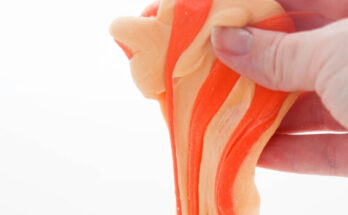Cheese Bread Recipe: Who doesn’t love warm, fluffy, golden cheese bread that melts in your mouth with every bite? Whether you’re planning a family dinner, a cozy brunch, or just want to satisfy your carb and cheese cravings, cheese bread is the ultimate comfort food.
This guide is not only foolproof but also flexible and super easy to follow. By the end, you’ll be a cheese bread master in your own kitchen.
Why Cheese Bread is So Popular
Cheese bread has earned its place in kitchens around the world for good reason. It’s the kind of food that appeals to all ages, whether you’re a kid sneaking bites before dinner or an adult pairing it with wine. The irresistible combination of soft bread and gooey, melty cheese is like a warm hug in edible form. Plus, it’s versatile—serve it as a side, a snack, or even a main course with a little creativity.
This bread isn’t just about taste; it’s about the experience. That delicious aroma while it’s baking, the stretch of cheese when you pull it apart, and the golden crust that adds just the right amount of crunch—it all adds up to something magical. And here’s the best part: it’s much easier to make than you might think. No professional baking skills required!
Types of Cheese Bread Around the World
Cheese bread is a global delight. In Brazil, you have Pão de Queijo, a chewy gluten-free version made from tapioca flour. Italy brings us Panini al Formaggio, soft buns loaded with parmesan. The United States? Think of cheddar-loaded pull-apart bread or even cheesy garlic bread. Meanwhile, Georgia (the country, not the state) gives us Khachapuri, a rich, egg-topped boat of cheese-filled bread that’s every bit as indulgent as it sounds.
Each version has its own personality, but the core appeal is the same—simple ingredients, bold flavor, and endless satisfaction.
Ingredients You’ll Need
Basic Ingredients
Before diving into the process, let’s start with the basics. Here’s a list of ingredients you’ll typically need to make a classic cheese bread:
- All-purpose flour – the backbone of your dough.
- Warm water or milk – to activate the yeast and bind everything.
- Active dry yeast – makes the bread rise and gives it that fluffy texture.
- Salt – enhances flavor.
- Sugar – feeds the yeast and adds a slight sweetness.
- Butter or oil – adds richness and moisture.
- Cheese – the star of the show, shredded and ready.
The kind of cheese you use can dramatically change the flavor. Cheddar is sharp and gooey, mozzarella is melty and mild, while gouda adds a smoky note. Want to get fancy? Try mixing cheeses for depth of flavor.
Optional Add-ins and Variations
Want to level up? These optional add-ins can take your cheese bread from good to legendary:
- Herbs like rosemary, thyme, or chives
- Garlic (minced or roasted) for extra zing
- Chili flakes or jalapeños for a spicy kick
- Bacon bits or ham for a protein punch
- Sun-dried tomatoes or olives for Mediterranean flair
These additions not only make your bread more interesting but also allow you to tailor it to your personal taste or what you have in the pantry.
Step-by-Step Cheese Bread Recipe
Step 1 – Preparing the Ingredients
Preparation is everything. Start by gathering all your ingredients and measuring them out. This not only saves time but ensures you don’t forget anything midway.
- Warm your liquid (water or milk) to about 100–110°F (lukewarm but not hot).
- Grate your cheese (you’ll need about 1 to 1½ cups).
- Chop any herbs or add-ins if you’re going with variations.
Make sure your yeast is fresh. If you’re unsure, bloom it by mixing it with warm water and sugar—if it foams in 5–10 minutes, it’s good to go. If not, toss it and try again.
Step 2 – Making the Dough
In a large mixing bowl:
- Combine the warm liquid, sugar, and yeast. Let it sit for 5–10 minutes until bubbly.
- Add flour gradually, mixing after each addition. Toss in the salt and melted butter or oil.
- Mix until it forms a sticky dough. If it’s too wet, add a bit more flour. Too dry? Splash in some water.
Once everything is combined, the dough should be soft and slightly tacky but not overly sticky. A stand mixer with a dough hook can speed things up, but good old-fashioned hand mixing works just as well.
Step 3 – Kneading the Dough
Kneading is where the magic happens. This process develops gluten, which gives the bread its soft, elastic texture. If you’re kneading by hand, lightly flour your surface and get to work.
- Push the dough away from you with the heel of your hand.
- Fold it back over itself.
- Turn it slightly and repeat.
Do this for about 8 to 10 minutes, or until the dough becomes smooth and elastic. It should spring back slightly when you press it with your finger. If you’re using a stand mixer, knead with the dough hook on medium speed for about 5 to 6 minutes.
Don’t rush this step. Proper kneading is crucial to a great final texture. Too little, and your bread may be dense or crumbly. Too much, and it might become tough.
Once done, shape the dough into a ball and place it in a greased bowl. Cover it with a damp cloth or plastic wrap and let it rise for 1 to 1.5 hours in a warm, draft-free spot. It should double in size.
Step 4 – Adding the Cheese
Now comes the fun part—stuffing your dough with cheese. Once the dough has risen, punch it down gently to release some of the gas. Then transfer it to a floured surface and flatten it into a rectangle.
- Sprinkle your shredded cheese evenly over the surface.
- You can also add herbs or extras at this stage.
- Roll the dough like a jelly roll or fold it over itself like an envelope.
Knead gently just enough to incorporate the cheese. The goal is to mix in the cheese while still maintaining a nice distribution throughout the dough.
Want a more layered cheese effect? Create pockets by cutting and folding the dough over cheese multiple times. Just be sure not to overwork it—you still want those beautiful cheesy veins running through the loaf.
Step 5 – Shaping and Resting the Dough
After adding the cheese, it’s time to shape your bread. You’ve got a few options:
- Traditional Loaf: Place in a greased loaf pan.
- Free-form Round: Shape into a boule and set on a baking tray.
- Pull-Apart Rolls: Divide into small balls and cluster in a baking dish.
Once shaped, cover the dough loosely and let it rest again for about 30 to 45 minutes. This second rise (also known as proofing) is essential for achieving that airy, tender crumb. The dough should puff up nicely, though not necessarily double in size again.
Preheat your oven to 375°F (190°C) during this time so it’s ready to go.
Step 6 – Baking to Perfection
Now the grand finale—baking your cheese bread. This is where all your hard work pays off.
- Place your dough in the preheated oven.
- Bake for 25 to 35 minutes, depending on the size and shape.
- Look for a golden-brown crust and bubbling cheese.
To check for doneness, tap the bottom of the loaf—if it sounds hollow, it’s done. You can also use a thermometer; internal temperature should read 190–200°F (88–93°C).
If the top is browning too quickly, tent it loosely with foil. Let the bread cool on a rack for at least 15 minutes before slicing. This helps the cheese set and the texture firm up, making it easier to cut.
Tips for the Best Cheese Bread
Cheese Selection Tips
Cheese choice can make or break your bread. Here are a few favorites:
- Cheddar: Sharp and flavorful, great melt.
- Mozzarella: Mild, stretchy, perfect for gooeyness.
- Parmesan: Adds a salty, umami kick.
- Gruyère: Nutty and slightly sweet.
- Pepper Jack: Adds a spicy twist.
Mixing cheeses? Combine a melter (like mozzarella) with a sharp one (like cheddar) for best results. Avoid pre-shredded cheese if you can—it’s coated in anti-caking agents that can affect melt quality.
Baking Tips and Tricks
- Room Temperature Ingredients: Ensure butter, eggs, and milk are at room temp for best mixing.
- Steam for Crust: Add a small pan of water to the oven while baking to enhance crust texture.
- Check Oven Hotspots: Rotate the pan halfway through to ensure even baking.
- Let it Rest: Don’t rush slicing. Cooling helps set the cheese and crumbs.
Serving Suggestions and Pairings
Perfect Pairings for Cheese Bread
Cheese bread is versatile, and it pairs beautifully with a wide array of dishes and beverages. Whether you’re planning a full meal or a light snack, here are some ideal ways to serve it:
- Soups and Stews: Cheese bread is a match made in heaven with hearty soups like tomato basil, creamy broccoli, or beef stew. The bread soaks up the broth and adds that extra layer of indulgence.
- Salads: Pair it with a crisp Caesar or Greek salad for a satisfying contrast between fresh and cheesy.
- Egg Dishes: Breakfast? Brunch? Serve your cheese bread alongside scrambled eggs, omelets, or a shakshuka skillet.
- Charcuterie Boards: Add cheese bread chunks to a meat and cheese board with olives, nuts, and fruit.
- Wine and Cheese Night: This bread is perfect with a glass of wine—try a Chardonnay with gouda-based bread or a Merlot with cheddar.
When serving, warm it slightly to bring out the flavors and soften the cheese. For guests, slice it thick and add a drizzle of olive oil or garlic butter for extra wow.
Creative Serving Ideas
Want to elevate your presentation? Try these fun and creative cheese bread serving ideas:
- Cheese Bread Sliders: Cut your loaf into thick slices and stuff them with mini burgers or pulled pork.
- Cheese Bread Croutons: Cube leftover bread, toss with oil and herbs, and bake for homemade croutons.
- Cheese Bread Pizza Base: Split the loaf and use as a base for quick mini pizzas.
- Dipping Delight: Serve with marinara, ranch, or a cheesy fondue for dipping.
It’s a canvas for culinary creativity. Just let your taste buds lead the way!
Storing and Reheating Cheese Bread
Short-Term Storage Tips
If you’ve got leftovers (which, let’s be honest, is rare!), here’s how to keep your cheese bread fresh:
- Room Temperature: Wrap in foil or plastic wrap and store in an airtight container for up to 2 days.
- Refrigeration: While it may extend freshness, it can also dry out the bread. If you must, wrap it tightly to minimize air exposure.
Avoid storing in plastic bags directly, as trapped moisture can make the crust soggy. Paper bags inside a bread box work well for maintaining that balance between soft interior and crisp exterior.
How to Reheat Without Losing Texture
Reheating cheese bread is a fine art. You want it to be warm and gooey again without turning rubbery or overly dry.
- Oven Method: Wrap in foil and warm in a preheated oven at 350°F (175°C) for about 10–15 minutes.
- Air Fryer: Great for crisping the crust—heat at 350°F for 5–6 minutes.
- Microwave (with caution): Wrap in a damp paper towel and heat in 20-second intervals to avoid overcooking the cheese.
For best results, always reheat just before serving. Freshly warmed cheese bread tastes nearly as good as it did right out of the oven.
FAQs about Cheese Bread Recipe
1. What is cheese bread made of?
Cheese bread is typically made from simple ingredients like flour (or tapioca flour for Brazilian-style), eggs, milk, butter, and cheese. The type of cheese can vary, but Parmesan, mozzarella, and cheddar are all popular choices.
2. Can I use any kind of cheese for cheese bread?
Yes! You can use your favorite cheese or a mix for more flavor. Hard cheeses like Parmesan offer a sharp taste, while mozzarella gives a gooey, stretchy texture.
3. Is cheese bread gluten-free?
If you’re making Brazilian cheese bread (Pão de Queijo), then yes—it’s naturally gluten-free because it uses tapioca flour instead of wheat flour.
4. Can I freeze cheese bread?
Absolutely! You can freeze the unbaked dough balls or the fully baked cheese bread. Just reheat in an oven or air fryer for a fresh-from-the-oven taste.
5. How long does cheese bread last?
Fresh cheese bread is best eaten the same day, but you can store it in an airtight container at room temperature for up to 2 days. Reheat before serving for the best texture.
6. Why did my cheese bread turn out dense or rubbery?
This often happens when there’s too much liquid or not enough rising agent. Also, avoid overmixing the dough—it should be just combined for a fluffy interior.
7. Can I add herbs or spices?
Yes! Garlic powder, rosemary, chili flakes, or even chopped jalapeños can elevate your cheese bread with bold flavors.
Conclusion
Cheese bread is the kind of recipe that checks all the boxes—simple ingredients, amazing flavor, and universally loved. Whether you’re baking it from scratch for the first time or tweaking your own version, the reward is always the same: delicious, golden bread with a cheesy surprise in every bite.
From breakfast to dinner, solo snacks to shared feasts, this recipe adapts to whatever your day holds. It’s no wonder cheese bread has become a staple in kitchens worldwide.
Ready to preheat that oven? Your perfect loaf is just a few steps away. Let your creativity flow and your kitchen fill with the irresistible aroma of freshly baked cheese bread.



